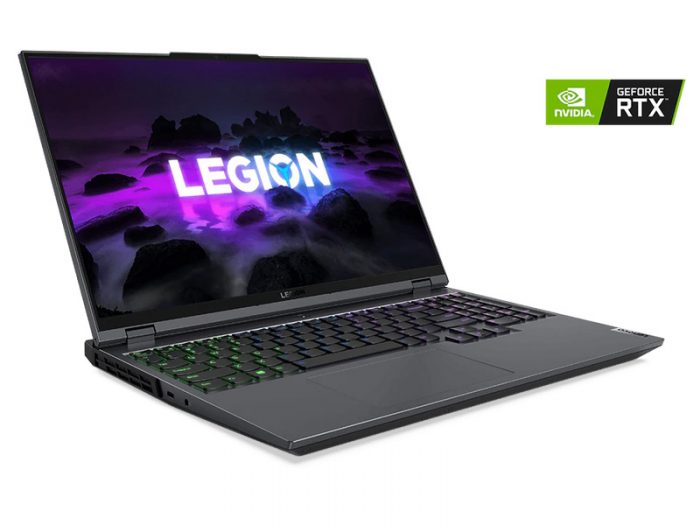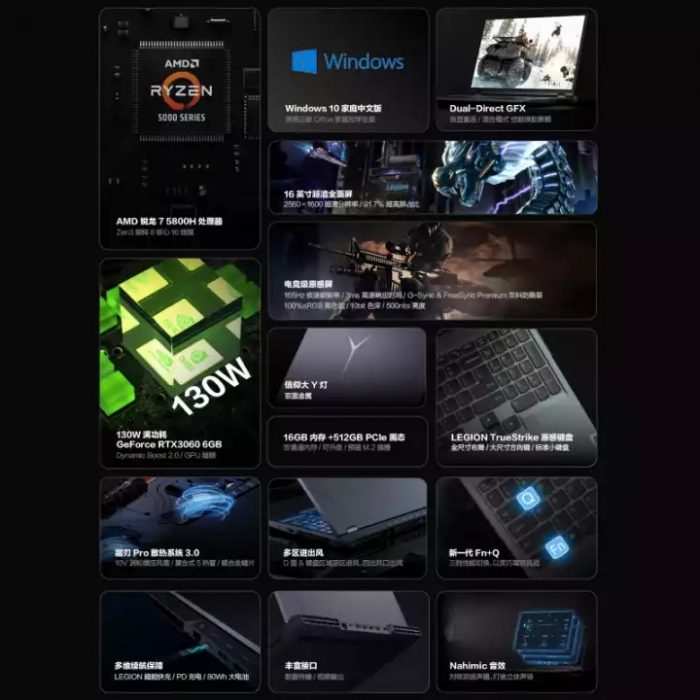It’s been a month since Lenovo introduced the Legion 5 Pro to the market. Based on its specifications, the laptop is a flagship killer in its category.

The company has introduced some more laptops (like Legion 7 and Legion 7 Pro), but today our main aim is to discuss the Legion 5 Pro.
The Legion 5 Pro comes with the latest AMD Ryzen 5 5800H processor based on the Zen 3 architecture. It also features the latest NVIDIA RTX 3000 series graphics cards.
Specifications
| Screen | 16″ QHD (2560 x 1600) IPS, 16:10, 500 nits, 165Hz / 3ms response time, 100% sRGB, G-sync, FreeSync, HDR400 |
| Processor | AMD Ryzen 7 5800H |
| Wireless Connection | Intel AX201NGW WFi6 |
| Graphics card | NVIDIA GeForce RTX 3060 6GB GDDR6 |
| Memory | 16GB dual-channel DDR4 3200MHz |
| Storage | 512GB NVMe SSD |
| Camera | 720p HD with webcam privacy shutter |
| Ports | 4x USB-A 3.2 Gen 1, 2 x USB-C, RJ45, 3.5 mm audio port, 1 x HDMI 2.1 |
| Battery | 80Wh |
| OS | Windows 10 Home |
| Weight | 2.58 kg |
With the debut of Lenovo’s 2021 series of gaming laptops, these issues are gone. By redesigning the motherboard circuitry, Lenovo finally implemented a direct connection to the independent display on the Zen3 gaming laptop, solving all the previous problems in one fell swoop.
The Legion 5 Pro features a 16-inch Quad HD (2500 x 1600) IPS display with a refresh rate of 165Hz (or 3ms response time). The display has a 16:10 aspect ratio, and other features such as 100% sRGB, HDR certification, Dolby Vision support, NVIDIA G-SYNC and AMD FreeSync are also available.

The GPU comes in two versions: RTX 3060 and RTX 3070 (depending on the buyer and their needs). Visually, the bezels on the sides of the screen are small, with only a slightly larger chin at the bottom. With such specifications, this laptop can easily run heavy games like The Witcher 3, Cyberpunk or Red Dead Redemption 2. Additionally, the Legion 5 Pro’s cooling is quite good, and its performance should not be underestimated.

The appearance design has also been further improved compared to predecessors. The Legion 5 Pro features the classic big Y logo on the back. The logo supports lighting, and the color can be adjusted via software. At the front, it has a three-sided narrow bezel design. There is a front-facing webcam on the top bezel, and next to it is an LED indicator that indicates whether the camera is working correctly.
The keyboard is a full-size design, while a numeric keypad is also available and supports two levels of white backlight adjustment. The Lenovo nameplate is also in the lower right corner. Users are advised to disable the touchpad before playing any game. It can be seen that the touchpad is positioned slightly to the left, while most games now use the “W, S, A, D” keys. Users may accidentally touch the Touchpad while playing the game.

The ports are mainly concentrated at the rear. From left to right, there’s one RJ45 Gigabit Ethernet port, one USB 3.2 Type-C port (supporting DP1.4 and 100W PD charging), three USB 3.2 Type-A ports, one HDMI 2.1 port, and a power connector. There are fewer ports on both sides; the right side has a USB 3.2 Type-A port and an electronic camera switch. There is also a USB 3.2 Type-C port (with DP 1.4 support) and a 3.5mm audio jack on the left side.

When the Legion 5 Pro is disassembled, the traditional copper pipes used for heat dissipation are visible. The cooling system of the Legion 5 Pro is also quite luxurious. The heatsink metal cover covers almost the entire motherboard.
Although the core cooling area has dual fans, four air outlets, and five heat pipes, the number of heat pipes may not seem large, but their diameter is not small. The heat pipes that pass through the CPU and GPU cores are also there. The diameter is as high as 10mm.